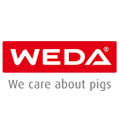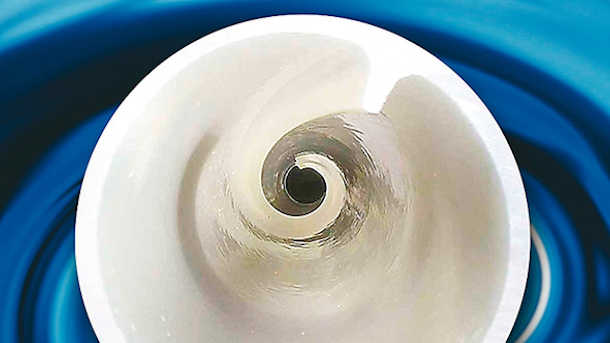 Insect-based feeds now enjoy a very good reputation worldwide and are increasingly used as animal feed. This is due on the one hand to the high protein content; on the other hand to the efficient, sustainable production possibilities to meet the increasing demand. Moreover, the antioxidant ingredients and good taste of the feeds have been shown to promote animal health and welfare.
Insect-based feeds now enjoy a very good reputation worldwide and are increasingly used as animal feed. This is due on the one hand to the high protein content; on the other hand to the efficient, sustainable production possibilities to meet the increasing demand. Moreover, the antioxidant ingredients and good taste of the feeds have been shown to promote animal health and welfare.
Expertise from liquid feeding

The proven animal feeding systems of established manufacturers are increasingly being used in the production of animal proteins. For example, the Lower Saxony specialist for pig feeding, WEDA Dammann & Westerkamp, has already set up production plants for insect larvae in Germany and abroad. “In such projects, our expertise from the automated liquid feeding systems for pig production is particularly applied,” reports WEDA product manager Jens Feldhaus.
Protein content up to 55 percent
One insect species that is already successfully fed in WEDA systems is the black soldier fly. The larva of the fly, which can be up to 17 millimetres long, utilises almost all organic residues. Depending on the feed composition, larvae with a protein content of up to 55 percent emerge from this. The rearing stations, where the easy-care fly lays its eggs in a honeycomb structure, must be properly moistened, illuminated and heated to 30° degrees. The young larvae are then placed on the metered-out substrate slurry. The fattened adult maggots are harvested for feed production. A part of this larval harvest is allowed to pupate and ensures the population of the next generation of insects.

WEDA technology for insect feeding
The modular feeding technologies of WEDA, the world market leader from Lower Saxony, can be quickly and easily integrated into these individual insect feeding systems. Their users have the same requirement profile as pig farmers: they attach importance to production reliability, feeding accuracy and hygiene - with simple operation and low costs. Thus, in the breeding facilities, the most important thing is the right substrate mix, its smooth logistics, as well as its efficient comminution and hygienisation.
WEDA computer controls feeding process
With the WEDA liquid feeding system, very different raw material components can also be metered out in the desired quantity and transported smoothly over long distances. The storage of the correct feed recipes and the control is carried out via the WEDA-Excellent 4PX computer. To ensure that the consistency of the mixed substrate mix remains constant even in complex pipe systems, the MixPipe spiral profile patented by WEDA is used on the inner wall of the feed pipes. The feed mixture is pumped through the pipe in a rotary motion and reaches the metering station. There, the substrate mix is dosed out in a monitored manner.
Protein source of the future
The insect-based feeds are currently already approved for the pet food sector as well as for aquaculture. Since the integration of the innovative WEDA technologies into insect feeding systems is uncomplicated, insect-based feeds could also be quickly used at any time for feeding farm animals. In this way, insects become an effective and environmentally friendly on-site protein source for the animal feeding of the future. WEDA Dammann & Westerkamp GmbH will continue to develop its innovative solutions together with the operators of the plants and steadily expand the segment.
March 16, 2021 - WEDA Dammann & Westerkamp




